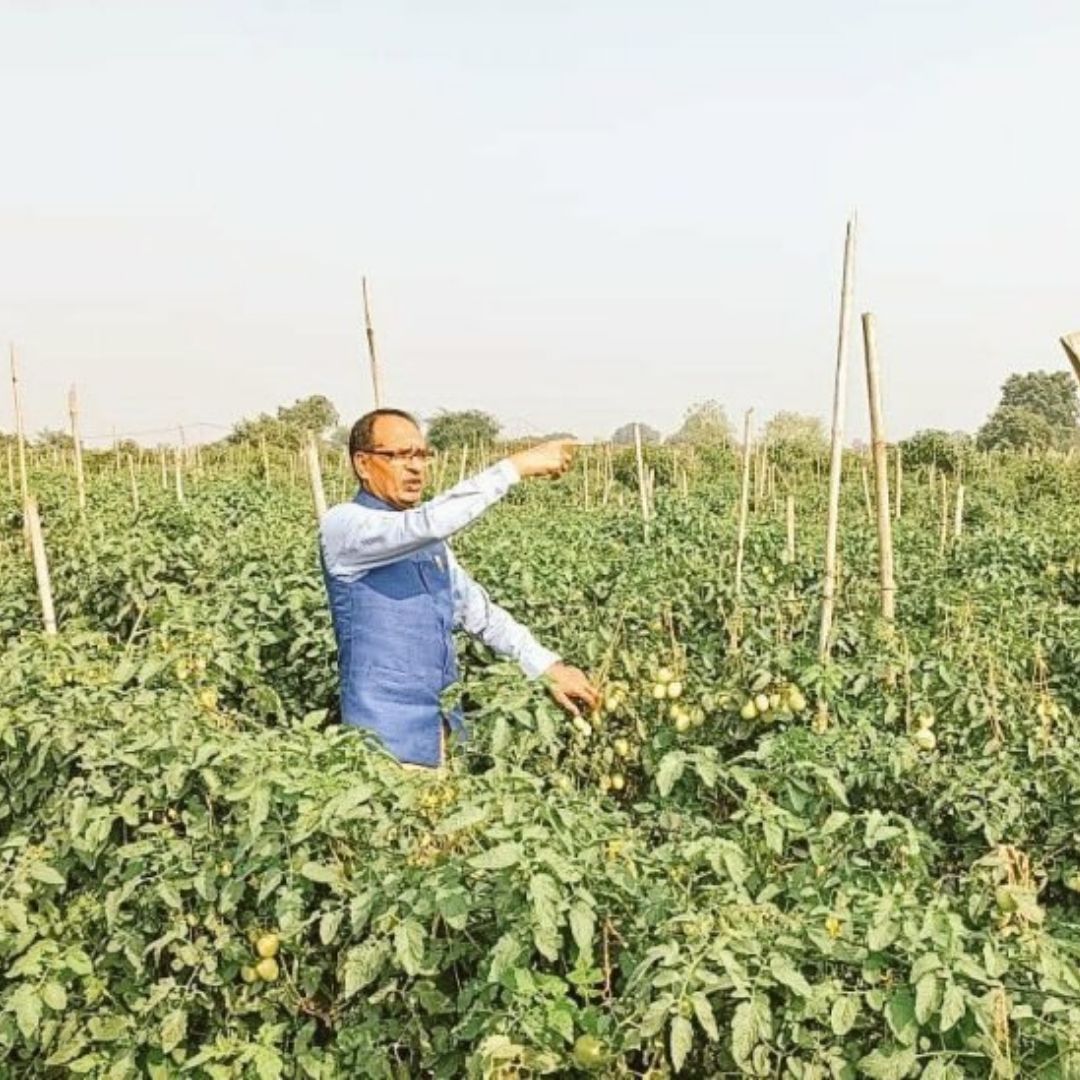
Image Credit: From Government Officials
Madhya Pradesh Leads The Country In Organic Farming
Madhya Pradesh, 22 Dec 2021 7:34 AM GMT
Editor : Ankita Singh |
A literature lover who likes delving deeper into a wide range of societal issues and expresses her opinions about the same. Keeps looking for best-read recommendations while enjoying her coffee and tea.
Creatives : Ratika Rana
Her primary objective is to inform, promote, educate and cultivate readers through writing.
Madhya Pradesh accounts for more than 40 per cent of India's organic farming share. The state is ahead of all others in producing soybean, gram, lentil, tur, and urad, second place in ramtil and moong.
India has been independent for more than 75 years now, and since then, the country has been an agricultural economy. Today, agriculture is the primary source of livelihood for more than 58 per cent of the Indian population. The field has seen several changes in the ways crops are grown in the last seven decades, and the inclusion of high-yielding variety seeds and the eventual shift to organic farming have evolved.
In the financial year 2020, over two per cent of India's agriculture is organic. Even though India has a minimal organic area under cultivation, it is being ranked first in terms of the number of organic farmers. India has over 1.9 million farmers as of March 2020, which is 1.3 per cent of 146 million agricultural landholders.
Only 2% Area Under Organic Farming
India introduced the organic farming policy in 2005. The 2.78 million ha was covered under organic farming in India is about two per cent of the 140.1 million ha net sown area in the country. Of this, 1.94 million ha is under National Programme for Organic Production (NPOP); 0.59 million ha under Paramparagat Krishi Vikas Yojna (PKVY); 0.07 million ha under Mission Organic Value Chain Development for North Eastern Regions (MOVCDNER) and 0.17 million ha under state schemes or non-schemes.
This shows that the NPOP scheme covers about 70 per cent of the country's organic area, of which 30 per cent is under conversion. Recently the Prime Minister spoke on the issue and said that the time to act is now before farming issues become severe.
5 Lakh Tonnes Of Organic Produce Exported From Madhya Pradesh
Madhya Pradesh has been one of India's leading states in organic farming. With more than a lakh organic farmers registered, Madhya Pradesh accounts for more than 40 per cent of India's organic farming share. The state is ahead of all others in producing soybean, gram, lentil, tur, and urad, second place in ramtil and moong. According to the Agricultural and Processed Food Products Export Development Authority (APEDA) report for the year 2020-21, five lakh tonnes of organic products were exported from the state, which was more than 2.5 thousand crore rupees. Mandla, Dindori, Balaghat, Chhindwara, Betul, Katni, Umaria, Anuppur, Umaria, Damoh, Sagar, Alirajpur, Jhabua, Khandwa, Sehore, Sheopur and Bhopal are some of the districts engaged in organic farming.
An official from the Farmer Welfare and Agriculture Development Department in the Madhya Pradesh Government told The Logical Indian, "Other states are beginning to think about organic farming now, whereas Madhya Pradesh started working in that direction in 2011 under the far-reaching foresight of the Chief Minister Shivraj Singh Chouhan. It became the first state in the country to implement organic farming. The state is full of possibilities for organic farming. To demonstrate the importance of agriculture in the development of the state's economy, the Madhya Pradesh government has taken several effective steps". He further mentioned that the state was committed to making agriculture profitable.
Efficient Resource Management and Technological Development
The state government has prepared itself with efficient resource management and technological development. Moreover, the practical research for production enhancement, achieving progressively increasing growth rate at par with several other progressive states of the country. The Madhya Pradesh government envisions leading the nation in organic farming to ensure sustainable livelihoods for the farming community and provide healthier food to the masses. Organic farming would also help conserve and better manage the natural resources and compensate for increasing the groundwater level in the villages.
The government's plan of increasing the income on the present agricultural market made it profitable for the farmers by increasing the cash income and adopting market-based processes. Moreover, the focus has also been on creating a sustainable environment by developing the technical and market security as per the requirement for the families, which are mainly dependent on the small and marginal agriculture-based economy. Additionally, the government has significantly invested in developing capable, professional human resources and institutions to create suitable infrastructure to supply the required quality inputs for organic production processes. As a matter of pride, the official mentioned, the government has ensured the availability and development of alternative energy sources by properly using organic waste.
Farmers in the state have focussed on all the cereal crops, vegetables, fruits, spices, aromatic and medicinal crops, which are grown using the minimum rate of chemical inputs. Such areas, the government official mentioned to The Logical Indian, "were, and would still be kept under the ambit of the proposed policy on priority basis". The government focuses on a systematic and scientific tabulation of the knowledge available to the tribes.
While the state is performing exceedingly well in terms of organic farming, there is no way they are planning to stop. The government departments are working to identify the areas along the banks of Narmada and are convincing farmers to allocate a portion of their land to organic farming. Farmers Welfare and Agriculture Development Department has paved the way for adopting organic technology and technology from the initial efforts.
Government's Plan of Action
Under the Paramparagat Krishi Vikas Yojna (PKVY), the government is analysing the areas in which the external influence of chemicals is lesser than usual. The zones, villages and gram panchayats, development blocks and districts such as Mandla, Dindori, Jhabua and Alirajpur are often provided for the expansion of the organic sector under the policy. Therefore, areas with lesser chemical influence are kept on priority.
Apart from depending solely on the farmers for organic produce, the government is also looking into forming primary producers' institutions such as production companies, production unions, and cooperatives, encouraging them to work on an equal footing with the larger institutions located in the state. These regional centres of organic production are an essential part of this policy. They are the focal point of the production and marketing activities of organic product material as a single window. Government and non-government intervention in such areas, awareness and ability development and new dimensions of research and development, good agriculture practice is being encouraged by the policy.
Also Read: Three Booked For Forcing Dalit Employee To Clean Manhole
 All section
All section














